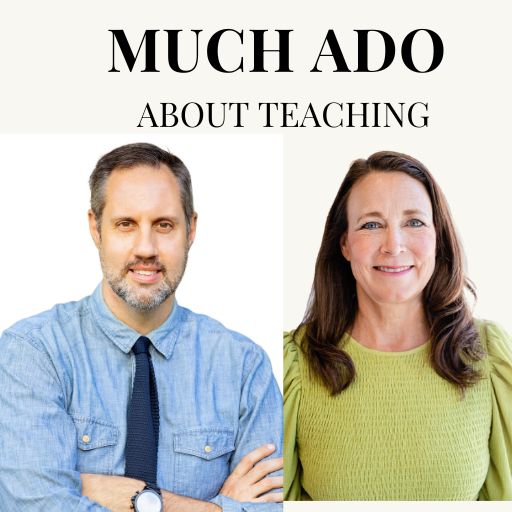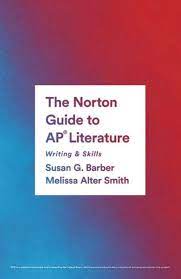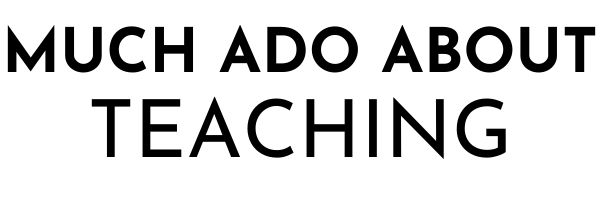I am a huge proponent of choice reading, but sometimes the whole class novel is necessary. A common text allows us to think through character development, plot and structure, and thematic ideas over the course of a few hundred pages and a few weeks. This slow burn and thinking on one central work usually has a large pay off.
Because of my schedule – modified block – I don’t have the opportunity to do several whole class novels in AP. I tend to have students read a couple of choice books – one at the beginning and another near the end of the year – and we will read a couple of shorter plays (Fences is up next). We really only have time for one longer whole class text. The temptation is to move quickly so we can “squeeze in more curriculum” but in reality the best thing is to slow down and lean fully into the work.
Less > more.
Deep > wide.
Chocolate > fruit.
Sorry for the digression.
I have always found reading in high school interesting because we assume that our students know how to read. Yes, teaching reading is primarily work done in younger grades, but we still need to provide strategies that will help students be successful readers. One strategy I talk about frequently is speeding up and slowing down in reading. Hear me out because I am sure this will be controversial for some of us. As an experienced reader, I am able to determine what parts of a book I need to pay really close attention to and which parts I can move through faster. Pacing can be a new concept for many secondary students, so I periodically talk through my reading pace and why I am speeding up or slowing down. This is eye-opening and a game changer for so many students.
Another strategy I discuss with students is what to do if they completely don’t understand what they’re reading. This is where we talk about reading at the sentence level. In complex or wordy texts (we see you, Mary Shelley), I encourage students to look for the independent clause in a long or complicated sentence. What is the subject? What is the subject doing? Is there an object? Once these things are identified, students can build out from there adding other clauses and phrases for meaning. If a student is stuck, this reorientation activity will typically get them back into the text.
Another thing I discuss is building reading stamina. We just finished Frankenstein this week (stay tuned for a future post that Brian and I are teaming up for with all of our resources), and this novel is not for the faint of heart primarily due to the writing style (and Victor’s whiny personality – ha). I chunk the novel in four or five segments and ask students to have these sections read by class on a particular day, but I also encourage students to divide these chunks into smaller sections. These smaller sections could be a chapter or a certain number of pages depending on the student. Some students prefer setting a time goal – 10 min, 15 min, 25 min – to read then take a break. Rome wasn’t built in a day, and unless you’re some kind of crazy reading freak, novels aren’t read in a day either. Be willing to help students figure out how to progress through a novel by breaking into smaller chunks.
We also talk about different supports while reading. I provide a link to the audio version of a book if it’s available for students who prefer to listen while they read which has been a huge help for students who struggle with a printed text. We also discuss how to use sites such as Spark Notes or Crash Course with John Green to aid in understanding rather than to replace reading. I don’t want to pretend that these sites don’t exist but rather want my students to know how to use them in an appropriate way. I also provide character charts or book marks with character lists for students to use while reading.
Finally, I give my students time to read in class. Students are busy these days with jobs and extra-curricular activities, and while I would like to think that my assigned novel is their top priority, I know it’s not. Students won’t have time to read an entire novel in class although if they use their time wisely, they will get a lot of it read. This small act of giving time to do the work that I’m asking goes a long way with student buy in. Sometimes I make hot chocolate for reading days (but sadly not this year due to our masking policies). Reading in English class is a win for me (and for them).
Here’s what reading a whole class novel looks in E216:
1 – Publish a reading schedule ahead of time.
Not only do my students read at different paces but students have different schedules that affect when and how much they read. Providing a reading schedule from day one of the novel lets students know in advance what they need to have read by then and can plan accordingly.
2 – Chunk and assign due dates.
Dividing the novel into chunks allows us to check in with each other during the reading for understanding and and an opportunity to ask questions. Sometimes I put a few questions on the board for students to discuss in small groups; sometimes we solely rely on student questions. Discussion is key for students to work out their understanding of the novel. By discussion I don’t mean me discussing what I think and acting like that’s the only interpretation. I allow students to struggle through making meaning from the text and learning from one another. Only then will I share some thoughts and nuances for further discussion. I’m also not big on traditional reading quizzes but may give students a quote or two from the chunk and ask them to provide the context and explain why it’s important. This provides a quick check for understanding and allows us to practice analysis in small chunks. Or we may do fill in the blank quiz that Brian referred to last week (Robert Walton is the kind of guy who __________) or make a character playlist or setting soundtrack and justify answers. All of these are great opportunities to open discussion.
3 – Close read specific sections for focus.
When I first started teaching, I required students to annotate their novels. I no longer do this after several students told me how miserable this made their reading experience. They wanted to read through and enjoy the book but instead were slowed down by the tedious process of annotating. While I didn’t want to give up the practice of annotating altogether, I now choose a specific section (or two) from our assigned chunk for us to focus on in class. These check-ins also provide an opportunity for mini-lessons where I can discuss structure, characterization, syntax, or whatever I think we need to focus on in that particular section.

4 – Provide a cumulative group activity.
We will write an essay on our whole class novel, but I like to provide at least one whole group activity to help us think about larger ideas. This activity varies each year depending on what students need. My students have been struggling with providing specific evidence when discussing central ideas in a text, so this past week I tweaked an activity I got from Brian at Mosaic (Critical Thinking Made Visible – starting at slide 19) for a whole novel debrief. Students traced thematic ideas throughout the novel, and this gave them an opportunity to consider different scenes and how they tie to those ideas.





Susan Barber teaches at Midtown High School in Atlanta, Georgia. In addition to reading, writing, and investing in the next generation, she loves watching college football with her family especially when Alabama is playing.
Photo by Olga Tutunaru on Unsplash













2 comments
Sheridan Steelman
I always love reading about your classroom strategies and how your students learn. It’s both quietly powerful and noisily engaging. Candy helps. Coffee aroma in the background helps. Thank you for all you do! Sheridan
Kathy
Thank you, Susan, for taking the time to post. Not sure how you do it, but it is appreciated!